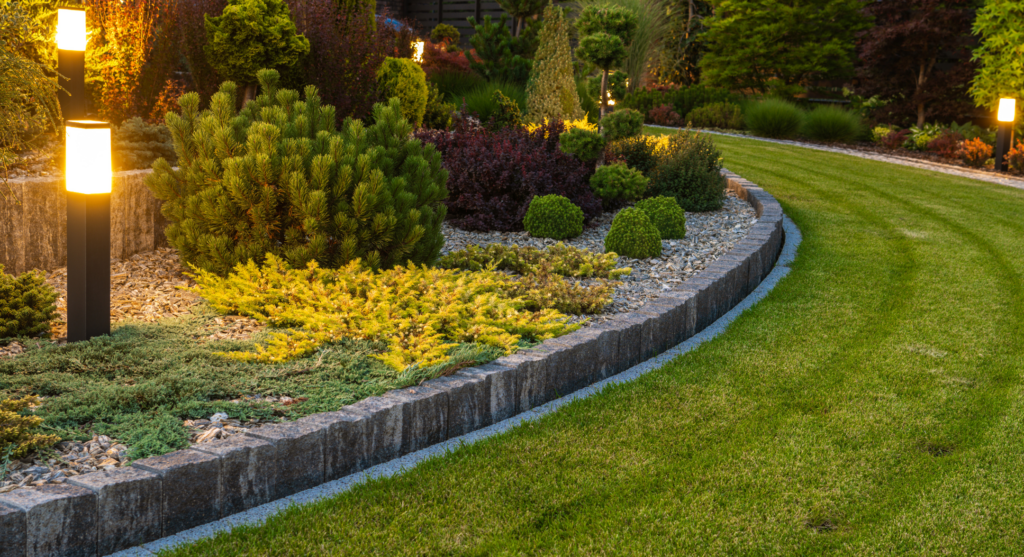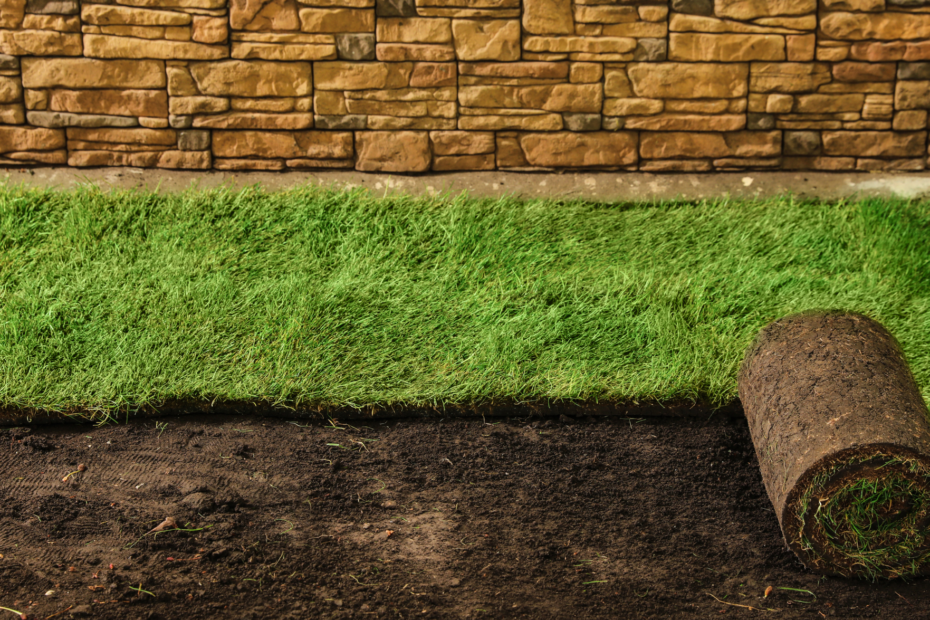Creating a beautiful and functional backyard is a dream for many homeowners. With the right ideas and a little effort, you can transform even the simplest outdoor space into a vibrant oasis. In this article, we share practical and creative backyard landscaping tips that will help you revamp your garden, patio, or yard. Whether you have a sprawling lawn or a modest backyard, these tips will inspire you to design an inviting, eco-friendly space that enhances your home’s curb appeal and provides a relaxing retreat for family and friends.
Why Invest in Backyard Landscaping?
Landscaping your backyard offers a multitude of benefits that go beyond mere aesthetics. Here are some key reasons why investing time and effort into landscaping is worthwhile:
Enhance Your Home’s Value
A well-designed backyard can significantly increase the value of your home. Whether you plan to sell in the future or simply want to enjoy a more pleasant living environment, a beautifully landscaped yard makes a positive impression.
Create a Personal Sanctuary
Your backyard can become a private haven where you relax, unwind, and connect with nature. With thoughtful design and creative backyard landscaping tips, you can create a space that reflects your personal style and meets your unique needs.
Improve Outdoor Functionality
Landscaping not only beautifies your space but also enhances its functionality. By adding designated areas for dining, lounging, or gardening, you can make the most of your outdoor area, turning it into an extension of your living space.
Promote Sustainability
Incorporating native plants, water-efficient systems, and sustainable practices into your backyard can help reduce your environmental impact. Sustainable landscaping conserves water, minimizes the use of chemical fertilizers, and supports local ecosystems.
Boost Mental and Physical Well-Being
Numerous studies have shown that spending time in nature can reduce stress, improve mood, and boost overall well-being. A thoughtfully landscaped backyard offers a peaceful retreat where you can enjoy outdoor activities, exercise, or simply relax under the open sky.
Planning Your Backyard Landscaping
Effective landscaping begins with a well-thought-out plan. Here are the essential steps to help you design a backyard that is both beautiful and functional.
1. Assess Your Space
Start by evaluating your backyard:
- Measure the Area: Determine the size and dimensions of your space.
- Identify Features: Note existing features such as trees, slopes, patios, or water bodies.
- Consider Sunlight and Shade: Observe how sunlight moves across your yard throughout the day. Identify areas that receive full sun, partial shade, or full shade.
2. Set Clear Goals
Define what you want to achieve with your landscaping project:
- Functionality: Do you need a space for outdoor dining, play, or relaxation?
- Aesthetics: What style do you envision—modern, rustic, tropical, or minimalist?
- Maintenance: Consider how much time you’re willing to dedicate to upkeep.
Setting clear goals will guide your design decisions and help you focus on elements that best suit your lifestyle.
3. Develop a Design Plan
Sketch a rough layout of your backyard. Consider:
- Zones: Divide your yard into different zones (e.g., seating area, garden beds, play area).
- Flow: Ensure there is a natural flow between zones for easy movement.
- Focal Points: Identify areas to highlight, such as a water feature, a garden sculpture, or a distinctive tree.
A clear design plan will help you visualize the final result and ensure that your backyard landscaping tips are effectively implemented.
Creative Backyard Landscaping Ideas
Now that you have a plan in place, here are some creative ideas to help you transform your backyard.

1. Create a Cozy Outdoor Lounge
An inviting outdoor lounge is a perfect way to extend your living space. Consider these elements:
- Seating: Use weather-resistant furniture such as outdoor sofas, lounge chairs, or even a hammock. Look for modular seating that can be rearranged to suit different occasions.
- Shade: Install a pergola, canopy, or large umbrellas to provide shade on sunny days.
- Lighting: Use string lights, lanterns, or solar-powered fixtures to create a warm and inviting atmosphere in the evenings.
- Accessories: Add outdoor rugs, throw pillows, and cushions to enhance comfort and style.
2. Build a Functional Garden Bed
Garden beds can serve as both decorative and productive elements in your backyard. Here’s how to create one:
- Raised Beds: Construct raised garden beds using wood, stone, or recycled materials. Raised beds improve drainage and soil quality, making them ideal for vegetables and herbs.
- Plant Variety: Choose a mix of plants that add color, texture, and seasonal interest. Consider including flowering plants, edible herbs, and vegetables.
- Pathways: Install simple pathways using gravel, mulch, or stepping stones to create a defined area and facilitate easy maintenance.
3. Incorporate Water Features
Water features add a sense of tranquility and sophistication to any backyard. Here are some ideas:
- Fountains: A small, solar-powered fountain can serve as a focal point and provide soothing background noise.
- Ponds: Create a mini pond with aquatic plants and fish. Ponds attract beneficial insects and wildlife, enhancing the overall ecosystem.
- Waterfalls: A cascading waterfall feature can be both visually stunning and relaxing, perfect for creating a peaceful retreat.
4. Utilize Vertical Landscaping
Vertical gardening is an excellent way to maximize space, especially in smaller backyards:
- Green Walls: Install a vertical garden or green wall system to grow herbs, succulents, or decorative plants.
- Trellises: Use trellises for climbing plants like vines, roses, or ivy. Trellises add height and structure to your landscape.
- Hanging Planters: Suspend planters from pergolas or the sides of your house to add greenery without taking up floor space.
5. Design a Sustainable Landscape
Sustainability is key to modern landscaping. Incorporate eco-friendly practices:
- Native Plants: Choose native species that thrive in your local climate and require minimal water and care.
- Drought-Resistant Varieties: Opt for drought-resistant plants that conserve water and reduce maintenance.
- Organic Practices: Avoid chemical pesticides and fertilizers. Use organic compost and natural pest control methods.
- Rainwater Harvesting: Install rain barrels to collect and reuse rainwater for irrigation.
6. Create a Play Area or Outdoor Workspace
If you have a family or enjoy outdoor activities, consider dedicating a section of your backyard to a play area or workspace:
- Play Zones: Set up safe play areas with soft ground coverings, outdoor toys, and simple games.
- Outdoor Workspace: Create an outdoor office or workshop area with a sturdy table, seating, and shade. This can provide a refreshing alternative to indoor workspaces.
- Multi-Functional Areas: Design spaces that can serve dual purposes, such as a patio that functions as both a dining area and a workspace.
Maintenance and Long-Term Care
A beautiful backyard requires ongoing maintenance to ensure it remains attractive and functional. Here are some tips for keeping your outdoor space in top shape:
Regular Cleaning and Weeding
- Routine Maintenance: Schedule regular cleaning sessions to remove debris, weed garden beds, and trim overgrown plants.
- Seasonal Care: Adjust your maintenance routine based on the seasons. In spring, prepare your garden for planting, while in fall, focus on cleaning up and protecting plants for winter.
Watering and Irrigation
- Smart Irrigation: Consider installing a drip irrigation system or using soaker hoses to deliver water directly to plant roots, minimizing waste.
- Mulching: Apply mulch to garden beds to retain moisture and reduce the need for frequent watering.
- Rainwater Harvesting: Use collected rainwater to irrigate your garden, reducing reliance on municipal water.
Fertilizing and Soil Health
- Organic Fertilizers: Use compost or natural fertilizers to nourish your plants without harming the environment.
- Soil Testing: Periodically test your soil to ensure it has the right nutrients and pH balance for optimal plant growth.
- Crop Rotation: If you grow vegetables, practice crop rotation to prevent soil depletion and maintain fertility.
Pest and Disease Management
- Natural Pest Control: Introduce beneficial insects and use organic pest control methods to keep your plants healthy.
- Regular Monitoring: Keep an eye on your plants for signs of pests or disease, and address issues promptly to prevent spread.
- Physical Barriers: Use netting or row covers to protect delicate plants from pests without resorting to chemicals.
Inspiring Real-Life Examples
Real-life examples can provide motivation and practical insights for your backyard landscaping projects. Here are a few inspiring stories:
Example 1: Urban Balcony Transformation
A city dweller with limited outdoor space transformed their small balcony into a lush, green oasis. By using vertical gardening techniques, hanging planters, and a few small raised beds, they created a mini garden that produces herbs, flowers, and even a few vegetables. This innovative use of space demonstrates that with creative backyard landscaping tips, even the smallest outdoor area can become a vibrant garden.
Example 2: Suburban Backyard Makeover
A suburban family revamped their backyard on a tight budget by focusing on sustainable practices. They replaced traditional lawns with drought-resistant ground cover, installed a rainwater harvesting system, and created a small vegetable garden using raised beds made from reclaimed wood. The project not only increased the home’s curb appeal but also provided fresh produce for the family, showcasing how sustainable design can be both beautiful and practical.
Example 3: Multi-Functional Outdoor Space
A couple looking to create an outdoor retreat transformed their backyard into a multi-functional space that serves as a dining area, relaxation zone, and garden. They incorporated a pergola with hanging plants, a custom-built patio for outdoor dining, and a series of flower beds that add color and fragrance. Their design perfectly blends functionality with aesthetics, embodying the essence of creative backyard landscaping tips.
Conclusion
Transforming your backyard with thoughtful landscaping ideas can truly elevate your home’s exterior and improve your quality of life. By incorporating sustainable practices, creative designs, and smart planning, you can create a space that is both beautiful and functional. Remember, the key to success lies in embracing backyard landscaping tips that work for your unique space, budget, and style.
From utilizing vertical gardens and sustainable irrigation systems to designing multi-functional outdoor areas and maintaining regular care routines, every step you take brings you closer to creating the backyard of your dreams. With dedication and creativity, your outdoor space can become a sanctuary for relaxation, entertainment, and even food production.
Take the time to assess your space, set clear goals, and plan a design that reflects your lifestyle. Experiment with different elements, learn from real-life examples, and don’t be afraid to innovate. The journey to a stunning, well-organized backyard starts with a single step, and with the right backyard landscaping tips, you can transform your outdoor space into an inviting oasis that enhances both your home’s value and your personal well-being.
So, roll up your sleeves, gather your tools, and start creating the backyard you’ve always wanted. Happy landscaping!

